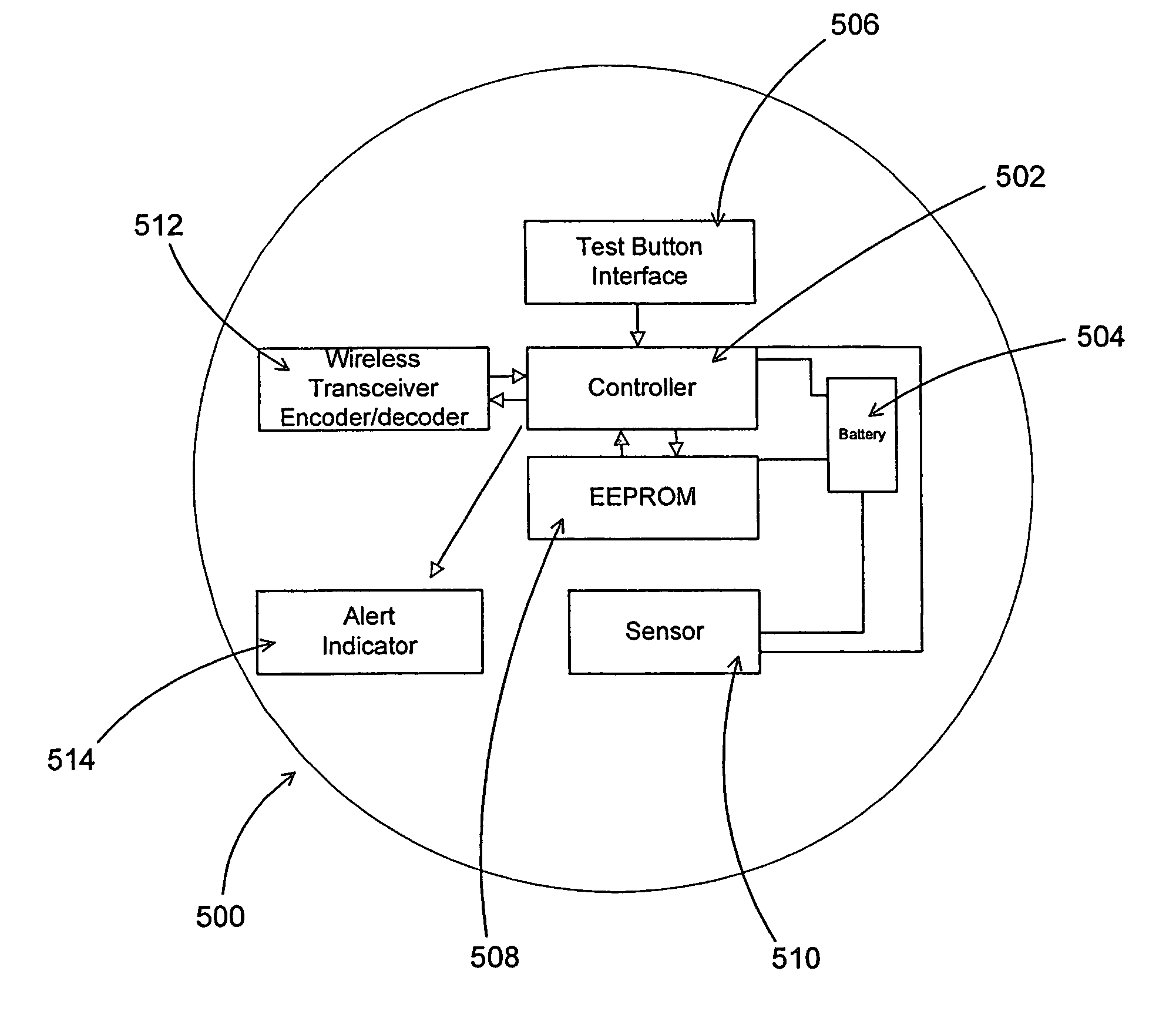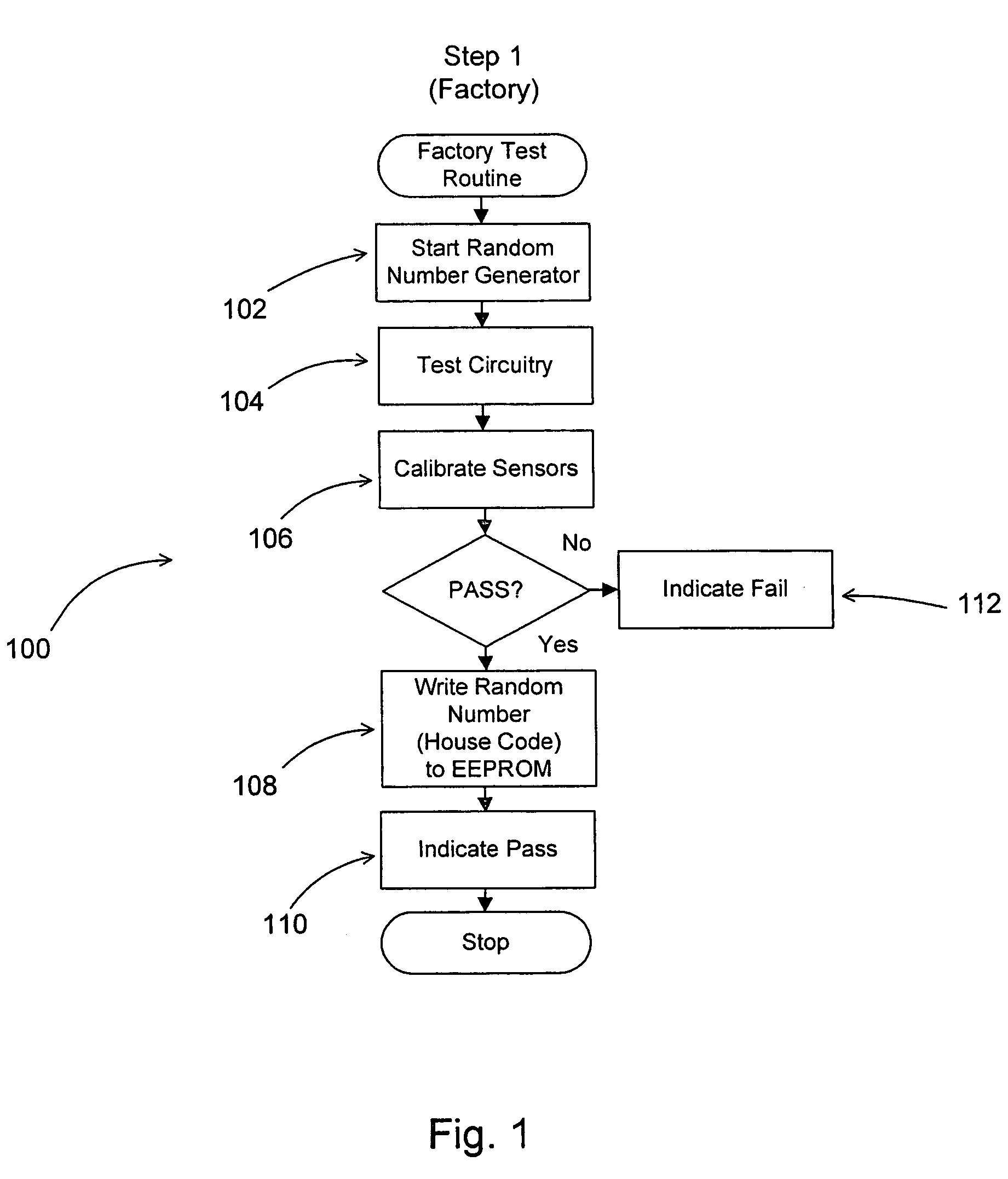Wireless linking of smoke/CO detection units
a detection unit and wireless technology, applied in the field of home alarms and detection units, can solve the problems of substantial hazard to those in the same house, inability to connect detection devices, and devices that provide no warning to those out of the hearing rang
- Summary
- Abstract
- Description
- Claims
- Application Information
AI Technical Summary
Benefits of technology
Problems solved by technology
Method used
Image
Examples
Embodiment Construction
[0024]According to the embodiment(s) of the present invention, various views are illustrated in FIG. 1-5 and like reference numerals are being used consistently throughout to refer to like and corresponding parts of the invention for all of the various views and figures of the drawing. Also, please note that the first digit(s) of the reference number for a given item or part of the invention should correspond to the Fig. number in which the item or part is first identified.
[0025]One embodiment of the present invention comprising environmental condition detectors operable to link forming a network teaches a novel apparatus and method for networking smoke detectors and other environmental detectors.
[0026]The details of the invention and various embodiments can be better understood by referring to the figures of the drawing. Referring to FIGS. 1-5, a functional diagram illustrating an environmental condition detector with some of the primary components is shown. The environmental condi...
PUM
 Login to View More
Login to View More Abstract
Description
Claims
Application Information
 Login to View More
Login to View More - R&D
- Intellectual Property
- Life Sciences
- Materials
- Tech Scout
- Unparalleled Data Quality
- Higher Quality Content
- 60% Fewer Hallucinations
Browse by: Latest US Patents, China's latest patents, Technical Efficacy Thesaurus, Application Domain, Technology Topic, Popular Technical Reports.
© 2025 PatSnap. All rights reserved.Legal|Privacy policy|Modern Slavery Act Transparency Statement|Sitemap|About US| Contact US: help@patsnap.com



